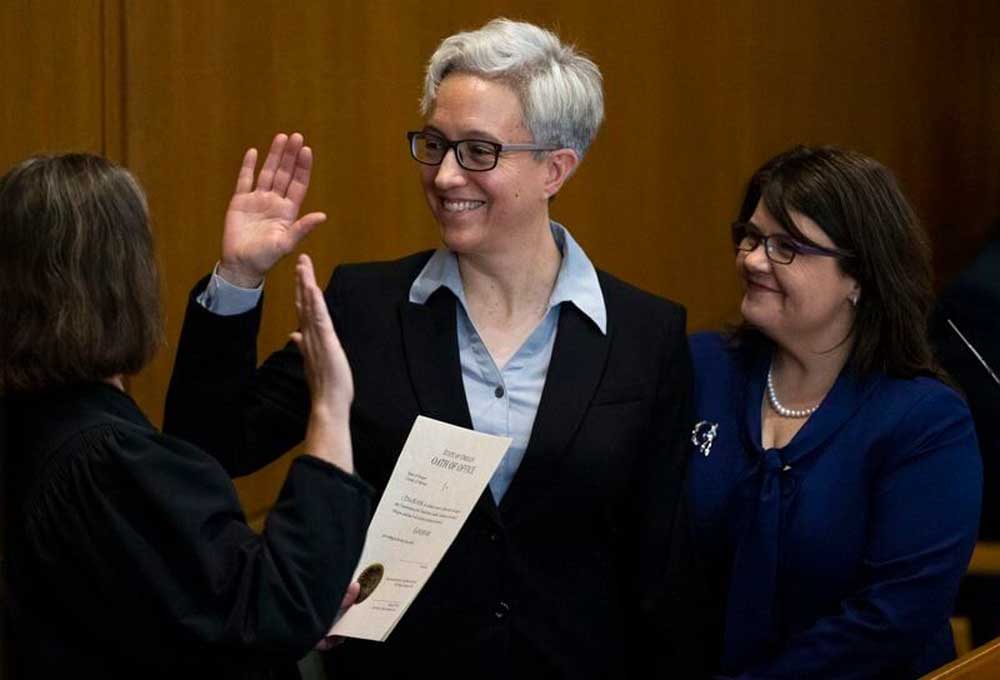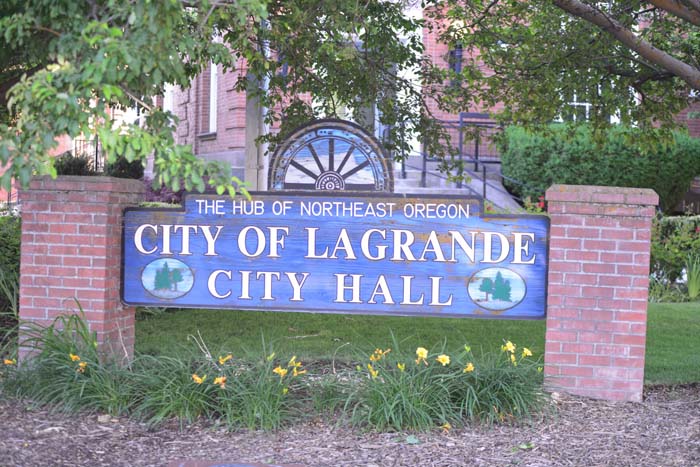Kotek notes early victories but focuses on what’s ahead
Published 10:03 am Friday, April 21, 2023

- Tina Kotek was sworn in as Oregon governor at the Capitol in Salem on Monday with her wife, Aimee Wilson, at her side. She is the state's third woman governor and one of two women, along with Maura Healey of Massachusetts, to become the nation's first openly lesbian governors.
Tina Kotek took a victory lap on her 100th day as Oregon’s 39th governor to note legislative approval of two early priorities — more than most new governors get in their first days in office.
One is a $217 million package to aid unhoused people and lay the groundwork for more housing construction. The other is a $210 million package to aid businesses and others seeking a share of billions in federal money available for domestic manufacturing of semiconductors and advanced research in science. Both passed with significant bipartisan support, and she has signed them into law.
Trending
But the Democratic chief executive also said there’s more that lawmakers need to do before they close their 2023 session by June 25.
“Those who know me, know that when I cross something off my to-do list, my focus is already on what’s next,” Kotek told reporters on Wednesday, April 19. “For every step we take forward, there are three more that emerge, and I am eager to charge ahead.”
Among the items on her to-do list:
• $1.3 billion more for housing, $1 billion of it from state bonds for construction and preservation of housing — Kotek has said the ultimate solution to homelessness is to increase the supply of housing deemed “affordable” — and $300 million more for continued aid to unhoused people and their rapid rehousing during the rest of the two-year state budget cycle that ends in mid-2025. (The emergency package funds programs and sets targets through Dec. 31.)
“When it comes to rehousing individuals, we have to make sure that when folks have found stability in shelter, they have a pathway to permanent housing,” she said. “This brings up the other challenge of making sure housing is there. Across this state, the further we go into addressing this challenge, it is going to get harder until we also get more housing online.”
Though bond proceeds do not come from the tax-supported general fund that is the most flexible source for state government spending, bond repayments do.
Trending
• $80 million to $90 million more for behavioral health and treatment for substance use, on top of the $1 billion that lawmakers approved from a variety of sources two years ago.
“It’s not just about resources,” she said. “It’s about making sure we have the coordination so that no one is falling through the cracks,” such as transitional care for people who leave Oregon State Hospital in Salem.
• $120 million for a targeted effort to boost reading skills, which Oregon students have fallen behind on. Research has shown that additional problems arise when students are unable to attain grade-level reading by the third grade. House Bill 3198, whose chief sponsor is Democratic Rep. Jason Kropf of Bend, is pending in the Legislature’s joint budget committee.
“Our early literacy rates in Oregon are intolerable,” she said. “Change is coming. If passed and adequately funded, the bill will be a first step toward a long-term approach to improve how we support our students’ development inside and outside the classroom.
Budget dispute
Kotek proposed a two-year budget of $32.1 billion, some of that money from canceling a planned transfer into state reserve funds, which now total nearly $2 billion.
But in the framework that the Legislature’s chief budget writers unveiled on March 23, they proposed to spend about $500 million less than Kotek — and they scrapped Kotek’s plan to cancel transfers into reserves in favor of an across-the-board cut of 2.5% in agency budgets that draw from the general fund and Oregon Lottery proceeds. The cut does not apply to other sources, and bond repayments — which cannot be reduced — are excluded.
The framework does set aside a pot of $325 million to pay for other priorities, among them the reading-skills money and temporary coverage for recipients who lose their eligibility for the Oregon Health Plan for low-income people. An estimated 100,000 people may lose coverage as a result of the end of a federal rule that barred states from removing people from Medicaid during the coronavirus pandemic.
Kotek said this during her meeting with reporters:
“We have $2 billion in reserves. I think it would be strategic not to put more in reserves, but to use some of those dollars to meet immediate goals, particularly around housing and homelessness, behavioral health and early literacy. I’ve been very clear about that and I will continue to advocate for those investments through the rest of this session.
“Why put more money there (in reserves) when we have immediate needs now?”
Simple legislative majorities are required to cancel the transfer of 1% of the budget’s ending balance into a new two-year cycle, as dictated by a 2007 law that created the state’s general reserve known as the rainy-day fund. Tapping either that fund or the education stability fund, which consists of lottery proceeds, requires specific economic triggers and 60% majorities in both chambers. Democrats are one vote short in each chamber of that mark.
Although the state’s latest economic and revenue forecast projects almost $4 billion in excess tax collections known as the “kicker,” Kotek said changes to the kicker are not on the table. Tapping that money requires two-thirds majorities in both chambers, a threshold set by a 2000 ballot measure that wrote the kicker into the Oregon Constitution — and minority Republicans have made it clear they would oppose such a move. (The exact amount, which will be set by the first forecast after the start of the new budget cycle, is rebated in the form of credits against 2023 tax returns due in 2024.)
The next forecast is scheduled May 17, after which lawmakers will make final decisions about state spending.









